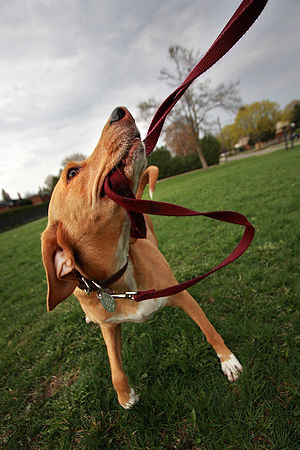 |
Leashes come in a variety of materials such as cotton, leather, hemp, rubber and so on. It’s important to use the proper size leash for your breed of dog. A large dog needs a heavier leash for control while a small dog can usually be managed with a thin lightweight leash. A 4 or 6 foot leash is good for walking your dog. In an emergency, a 6 foot leash can be looped throught the handle to make a collar and leash combined or a muzzle if necessary. Retractable leashes allow a dog more freedom for exploration but can be dangerous. The extension can allow your dog to get into dangerous places, reach not so friendly dogs or even traffic. The cord can break or cause injury to you or your dog when retracted. If the dog makes a sudden dash and the leash becomes fully extended, s/he can experience neck and trachea damage or be flipped over causing other injuries. The leash may be pulled out of your hand. The button that releases and retracts the leash can break rendering the leash useless. Bungee leashes are made of rubber tubing that is supposed to reduce the risk of injury to your dog’s neck if s/he pulls. The best way to stop your dog from pulling is to train on a loose leash. A long line leash, anywhere from 10-60 feet long, is used for training, particularly the “come” command. This type of leash should only be used in safe areas away from busy streets and traffic. Slip leashes with a ring on one end allowing you to form a loop so that it is a collar and leash in one should only be used in emergencies. If your dog pulls on this leash, There are different types of harnesses usually in several sizes. They are adjustable within the size. If your dog pulls when out walking, there are harnesses that prevent pulling and aid in training your dog to stop this behavior. There are front and rear harnesses for dogs that need assistance walking due to illnesses or amputation. Their are special harnesses available for safety in cars. Related articles: |
Facebook Comments Box



